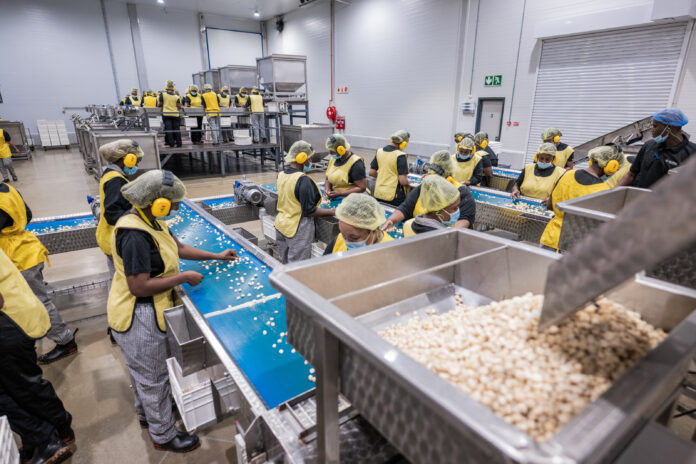
The year 2025 has been a defining one for South Africa’s macadamia industry. While challenges have been ample, many growers have also seen positive outcomes. Analysing winning factors in the past season provides critical insight into the factors that will shape the long-term viability of the macadamia industry.
According to Shane Hartman, CEO of Global Macadamias, three major trends have emerged that will significantly influence the stability and long term viability of the macadamia industry: low inshell prices, a widening price gap between styles, and the vital role of grower-processor partnerships.
“2025 has reminded us that success in this industry depends on collaboration. Growers and processors alike must make informed, strategic decisions if we want to secure a sustainable future for South Africa’s macadamias,” said Hartman.
Low inshell prices
The year began with a promising outlook on the market but quickly shifted following the introduction of import tariffs on South African products into the United States (US), part of President Donald Trump’s trade measures.
Despite this disruption, Global Macadamias honoured its price commitments and even accelerated payments to growers, providing a crucial boost to cash flow in an industry still recovering from post-pandemic lows.
Key to delivering on price commitments, was the careful balance of inshell versus kernel exports. Hartman pointed to market dynamics in the inshell segment that were becoming increasingly challenging and which required strategic management and careful planning.
Hartman stated that dependence on inshell exports to China was the single biggest threat to the industry’s long-term stability.
During the recent MacDay hosted by Macadamias South Africa (SAMAC), Chinese delegations emphasised that China was becoming increasingly self-reliant in macadamia production and no longer dependent on South African supply.
Hartman noted that whether or not this was simply a negotiation tactic, the message was clear: China was unlikely to increase prices paid for inshell macadamias.
“China is aware that South Africa has many exporters that don’t have sufficient cracking facilities, making certain segments of the industry dependent on inshell exports. This, coupled with increases in their home grown volumes, will provide China with the upper hand in negotiating prices, and thereby keeping inshell prices low.
“Since China has invested heavily in cracking capacity, allowing it to process their own nuts, and those bought from South Africa, they could in future directly compete with us in the kernel market. That could place downward pressure on prices for kernel exports globally.”
For an industry long reliant on China’s inshell demand, this is a wake-up call. To remain viable, South Africa must continue investing in domestic cracking facilities to keep prices stable and sustainable.
A widening price gap between styles
While inshell exports have slowed, demand for kernel has remained strong. The team at Global Macadamias successfully redirected product into new and existing kernel markets when the US tariffs came into effect.
Another defining trend of 2025 is however the increasing price gap between different kernel styles.
Historically, price gaps were evident between inshell and kernel, with differences in price between whole nuts, halves, and pieces moderate. This year, however, the disparity in the kernel segment has widened, and it is expected to continue doing so.
“This year more than ever, growers have felt the effect of their chosen varieties. This effect is expected to compound, since Beaumonts, traditionally exported as inshell, tend to produce halves when cracked. With the inshell market waning, we can expect growing volumes of halves in the kernel offering,” Hartman explained.
He added that the versatility of halves is its strength. “It is ideal for snacks, confectionery, cereals, and even cooking applications. Global Macadamias is investing in targeted marketing campaigns to highlight halves’ versatility and appeal.”
Demand for whole nuts, particularly styles 0 and 1, remains robust and is forecast to rise further. As a result, their prices are increasing at a faster rate than halves or pieces. This underscores the importance of achieving maximum whole nuts to secure better on farm returns.
Grower-processor partnerships
While growers cannot control market prices, two key factors remain within their influence: variety selection and cracking processes. “The variety determines whether a nut is likely to remain whole when cracked. But the way in which the nut is handled by a processor, and the technology used to crack the nuts also has a substantial impact on achieving wholes,” Hartman explained.
Perhaps the most critical insight of 2025 is therefore the value of strong partnerships between growers and processors. The quality and style outcome of macadamias depend not only on what is planted, but also on how the nuts are processed.
“Even the best crop can lose value if the processor lacks the right equipment or does not pay attention to detail,” said Hartman. “Our focus is on precision and efficiency. This means regular maintenance and easy let downs to ensure nuts don’t fall from long distances when being transported through the factory. Lessening the pinball effect is crucial, as every bump reduces the likelihood of a nut remaining whole when it is cracked.”
Efficient operations have also ensured that Global Macadamias could manage costs, maintain price commitments, and maximise grower returns. Despite reduced national volumes this year, Global Macadamias maintained its commitments and even expedited payments, supported by its streamlined processes and economies of scale.
“The more nuts we process, the lower our per-unit cost. That translates into better prices for growers. For that reason, maintaining a strong, reliable grower base is vital to keeping the factory operating at its optimum,” Hartman explained.
A year of lessons and leadership
Looking back on 2025, Hartman said that the year had been one of learning and adaptation, not just for Global Macadamias, but for the entire industry.
“We have seen first-hand how growers’ variety choices, processing efficiency, and market agility all interact to determine success,” he concluded. “These three trends are shaping the next chapter for macadamias. The decisions we make now, both on farm and in the factory, will define the industry’s stability and long-term viability.”








